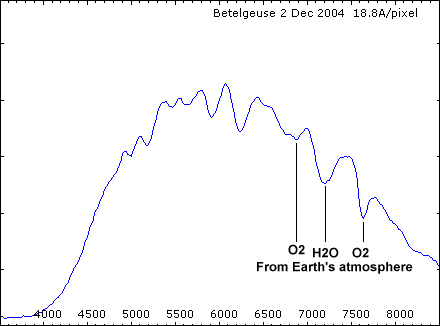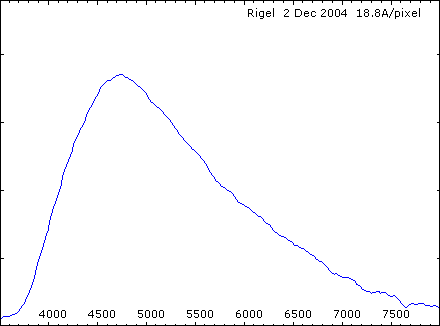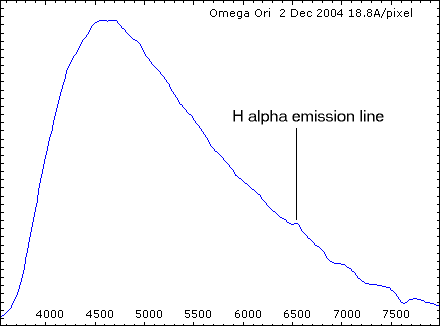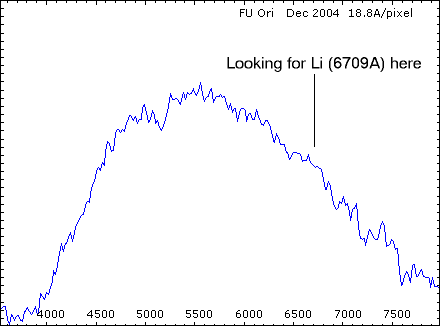|
|
Alpha Orionis (Betelgeuse) A Red Supergiant. This spectrum shows the typical characteristics of an ageing cool star: High brightness in the red-infra red region, metalic absorption lines and broad absorption lines from molecules in the cool atmosphere. Telluric absorption lines due to oxygen and water in the Earth's atmosphere are also apparent |
|
|
Beta Orionis (Rigel) A Blue Supergiant. The spectrum is essentially featureless at this resolution. Any relatively faint narrow absorption lines have been lost against the background continuum. The relative blueness of this star compared with Betelgeuse is clear in the shape of the broad shape of the spectrum. |
|
|
Omega Orionis This is a Be type star which was reported to be in outburst. A Hydrogen alpha emission line is just evident. Series of higher resolution spectra, tracking changes in Ha emissions from this and other Be stars can be found on Christian Buil's site here http://www.astrosurf.com/buil/us/bestar.htm |
|
|
FU Orionis This is the star which gives the FUor class of variable stars its name. They are young stars which are associated with reflection nebulae and can brighten suddenly as they evolve towards the main sequence. FU Orionis brightened from 16th to 9th magnitude in 1937. The presence of Lithium in the spectrum is a characteristic of young stars but it is not apparent in this low resolution spectrum. More information on FU Ori can be found here http://www.aavso.org/vstar/vsots/0202.shtml |



